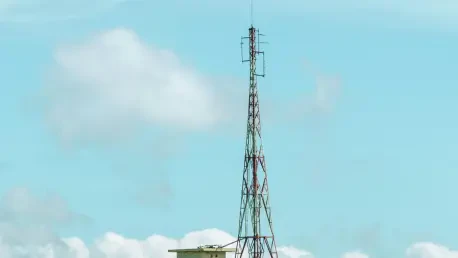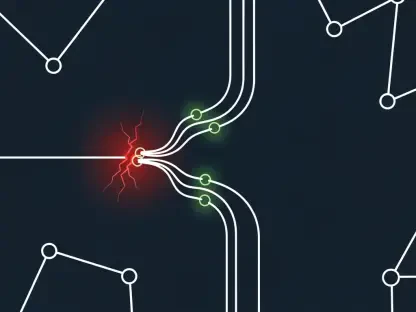In the secluded island town of Sitka, Alaska, a community of roughly 8,400 residents achieved an extraordinary milestone by halting the construction of a towering 120-foot cell tower in the heart of their residential area, marking a significant triumph for grassroots efforts. This victory, fueled by the dedication of Sitka for Safe Tech and bolstered by legal support from Children’s Health Defense through its Stop 5G Initiative, stands as a beacon of hope for small communities everywhere. The success story prompts a vital inquiry: could this Alaskan victory pave the way for other neighborhoods to safeguard their own spaces from similar telecommunications projects? The battle in Sitka wasn’t merely about rejecting a structure; it encapsulated deeper concerns over health risks, environmental integrity, and the preservation of local charm. As telecommunications companies push for expansion, often citing the need for enhanced connectivity, the resistance in this remote town underscores a growing tension between industry goals and community values, setting the stage for a broader national conversation.
Community Power and Activism
Mobilizing for a Common Cause
In Sitka, the residents didn’t passively accept the looming presence of a cell tower; they took decisive action to protect their cherished way of life. By forming Sitka for Safe Tech, this tight-knit community harnessed the power of collective voices to challenge a project that threatened their neighborhood’s integrity. Their efforts were far from haphazard—residents attended public hearings in droves, articulating concerns over safety and aesthetics with clarity and passion. This organized resistance demonstrated how even a small population can influence local policy when united by a shared purpose. The determination to maintain their environment, free from intrusive infrastructure, became a rallying cry that resonated through every meeting and petition, proving that grassroots activism can stand toe-to-toe with corporate agendas. The story of Sitka serves as a testament to the impact of community engagement in shaping the spaces people call home, highlighting a model of resistance that could inspire others facing similar threats.
Strength Through Strategic Partnerships
The fight in Sitka gained significant traction through the strategic alliance with Children’s Health Defense and its Stop 5G Initiative, which provided essential legal and advocacy resources. Navigating the maze of zoning laws and regulatory frameworks is no small feat for a community without specialized expertise, but this partnership leveled the playing field against Tidal Network, the proposing company. Residents, including voices like Hal Spackman, have acknowledged how pivotal this support was in articulating their objections within a legal context, transforming raw concern into actionable arguments. This collaboration not only empowered Sitka’s citizens to challenge the variance request effectively but also offered a blueprint for other communities on leveraging external expertise. The synergy between local passion and professional guidance created a formidable front, suggesting that such alliances could be a game-changer for neighborhoods elsewhere looking to defend their rights against powerful telecommunications initiatives.
Health and Environmental Concerns
Unease Over Radio Frequency Emissions
A driving force behind Sitka’s opposition to the cell tower was the pervasive fear of health risks linked to radio frequency (RF) emissions. Many residents expressed deep apprehension about the long-term effects of living just 150 feet from a source of electromagnetic radiation, a concern that resonates with broader debates on the safety of such technologies. This anxiety was amplified by advocacy from Children’s Health Defense, which has long campaigned to raise awareness about potential dangers associated with prolonged exposure. The community’s worry wasn’t rooted in mere speculation but in a desire for precaution, especially given the proximity to homes where families live and children play. Public comments during hearings revealed a unified stance against accepting unknown health risks for the sake of connectivity, pushing for safer alternatives or outright rejection of the project. This health-focused resistance in Sitka mirrors a growing sentiment across many regions, where citizens demand transparency and rigorous safety assessments before infrastructure is imposed on their doorsteps.
Protecting a Pristine Natural Setting
Beyond health implications, the proposed cell tower posed a significant threat to Sitka’s environmental and aesthetic integrity, a concern that struck a deep chord with residents. Nestled among old-growth forests and offering sweeping ocean views, the town’s landscape has been meticulously preserved through careful planning, avoiding visible utilities like streetlights and power lines. The idea of a 120-foot structure disrupting this scenic harmony was unthinkable for many, including locals like Kelly Sweeney and Robert Krehbiel, who emphasized the community’s dedication to maintaining natural beauty. Moreover, the steep, hilly terrain of Sitka is notoriously prone to landslides, and construction activities risked exacerbating this ever-present danger. The potential for environmental disruption wasn’t just a visual issue but a matter of safety, as destabilizing the land could have catastrophic consequences. This dual focus on preserving both the environment and community well-being underscored the depth of opposition, illustrating why the tower’s placement was seen as a direct assault on Sitka’s core identity.
Legal Precedents and Broader Impact
Upholding Local Governance
The legal battle in Sitka hinged on the enforcement of zoning regulations, culminating in a landmark decision by Administrative Law Judge Max Garner that favored community interests over corporate plans. Tidal Network sought a variance to sidestep the town’s 35-foot height restriction for structures in residential areas, but their proposal faced unanimous public opposition during hearings. Residents highlighted impacts on property values, safety concerns, and visual appeal as compelling reasons to reject the project. Judge Garner’s ruling ultimately denied the variance, citing the company’s failure to demonstrate a genuine coverage gap or to adequately explore alternative locations as mandated by law. This decision reaffirmed the significance of adhering to municipal ordinances, ensuring that local voices aren’t drowned out by industry demands. The outcome in Sitka sends a clear message that community input remains a critical factor in infrastructure decisions, potentially emboldening other towns to uphold their zoning laws with similar resolve.
Shaping Future Telecommunications Projects
The implications of Sitka’s legal victory extend far beyond the boundaries of this Alaskan island, setting a precedent that could reshape telecommunications development across southeast Alaska and further afield. As noted by legal experts from Children’s Health Defense, including lead litigator W. Scott McCollough, the ruling clarifies that federal legislation, such as the Telecommunications Act of 1996, does not automatically override local regulations when companies fail to justify their initiatives. This decision could encourage other communities to challenge ill-placed projects, compelling telecommunications firms to prioritize areas with genuine connectivity needs over densely populated or sensitive regions. The emphasis on local control suggests a future where industry must engage more transparently with residents, respecting safety concerns and property values rather than pursuing unchecked expansion. This shift might foster a more balanced approach to infrastructure growth, where community well-being is weighed equally against technological advancement, potentially altering the landscape of such developments nationwide.
Reflecting on a Community Triumph
Looking back, the success of Sitka’s residents in blocking an intrusive cell tower marked a defining moment for grassroots activism and local governance. Their unified stand, supported by strategic legal partnerships, not only protected their neighborhood from health and environmental risks but also reaffirmed the strength of municipal authority in the face of corporate pressure. This achievement wasn’t just a local win; it echoed a national trend of growing resistance to telecommunications projects in residential areas, highlighting a collective push for safety and autonomy. As the dust settled, the precedent set by this ruling offered a guiding light for other communities, suggesting that with organization and resolve, even the smallest towns could influence their future. Moving forward, the focus should shift to fostering dialogue between residents and industry, ensuring that connectivity goals align with community priorities. Encouraging stricter local ordinances and transparent planning processes could be the next step, paving the way for a more harmonious integration of technology into everyday spaces.









